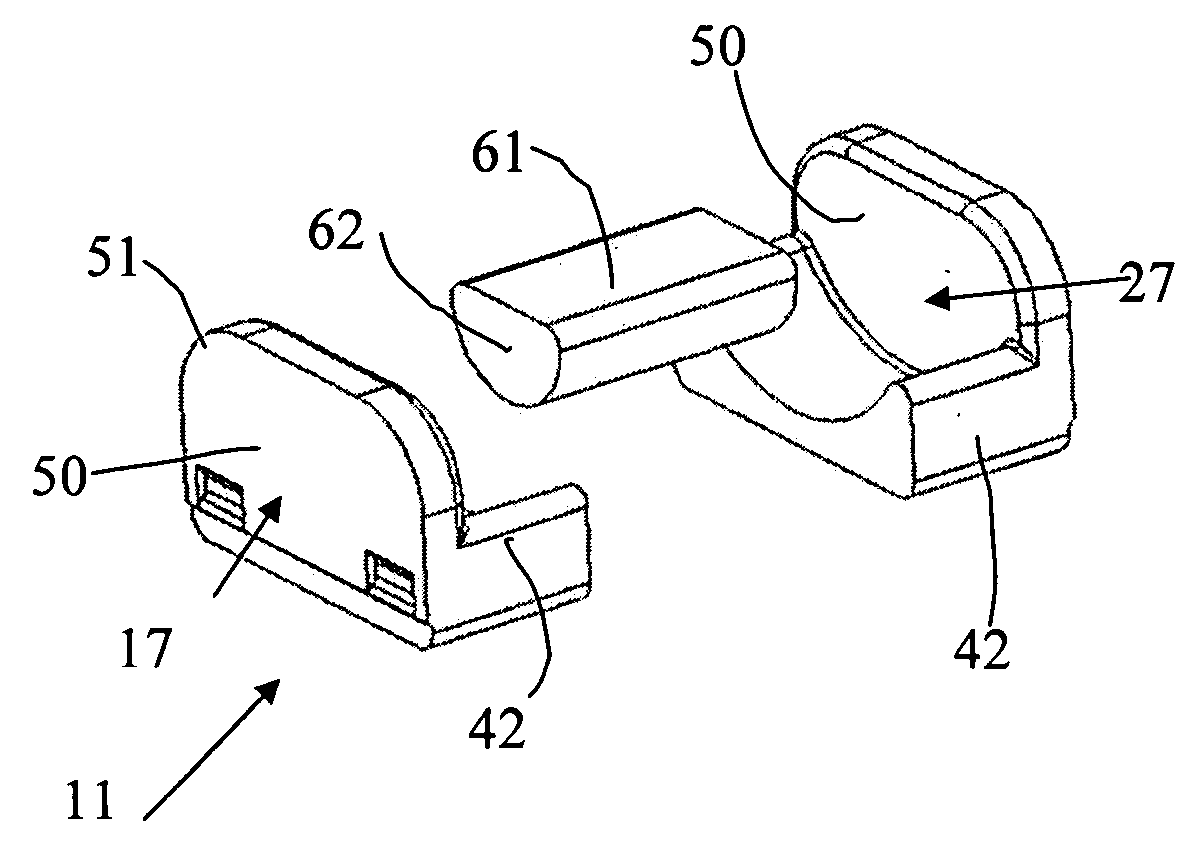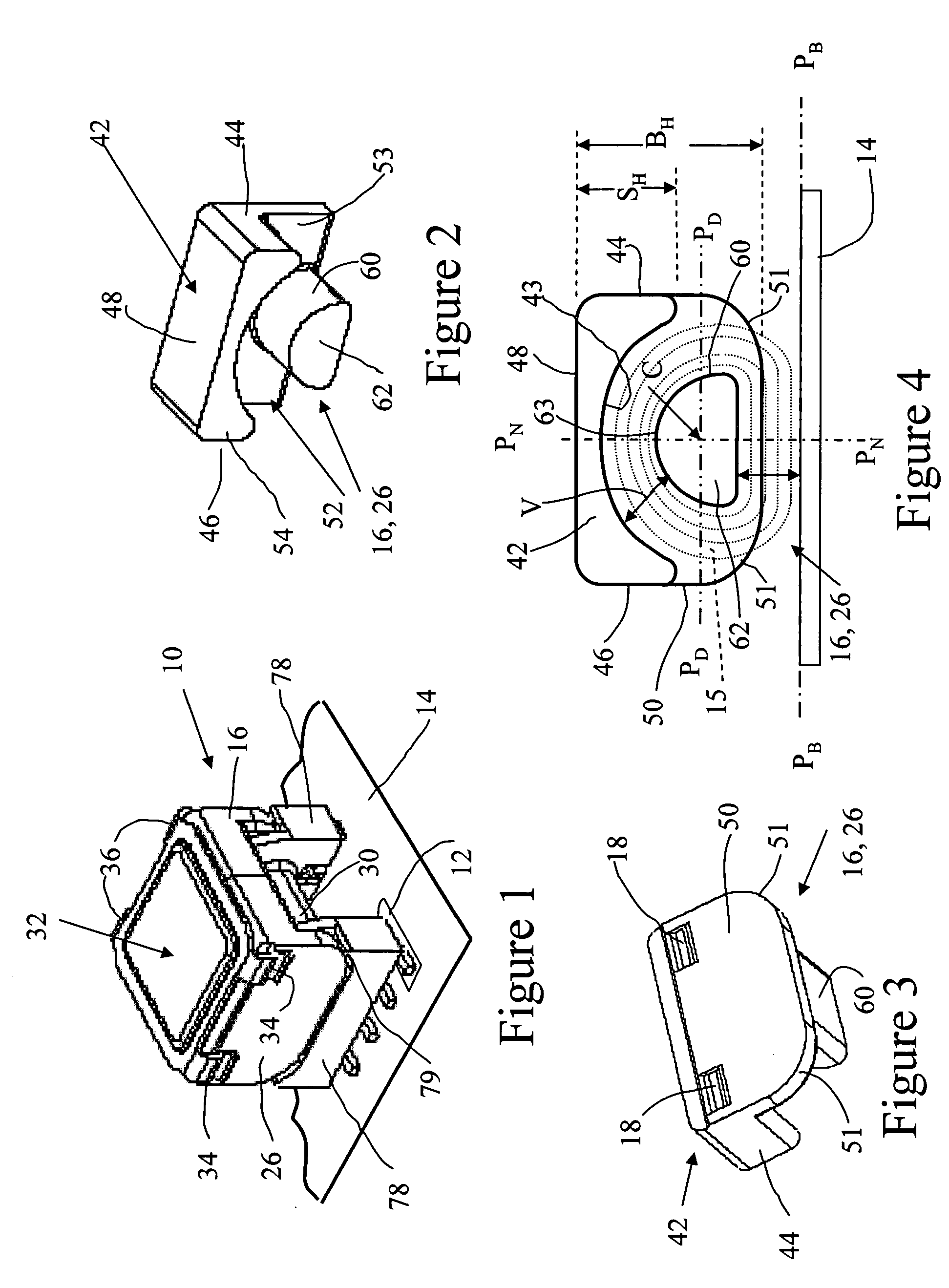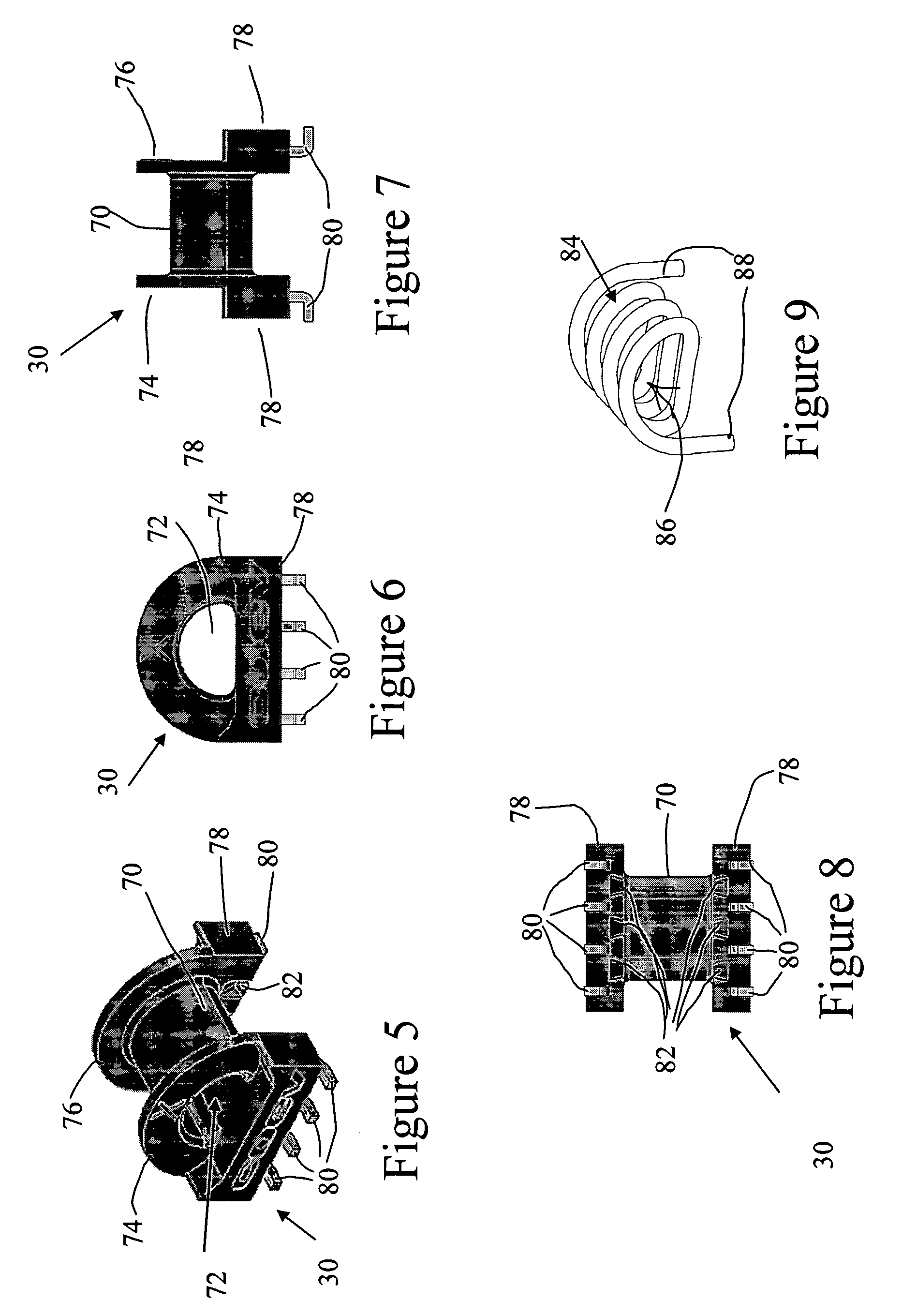Transformer or inductor containing a magnetic core having abbreviated sidewalls and an asymmetric center core portion
a technology of transformers and inductor components, applied in transformers/inductance details, coils, electrical devices, etc., can solve the problems of reducing and reducing the size of the resultant device, so as to improve the electrical performance of the device and reduce the resultant device footprint
- Summary
- Abstract
- Description
- Claims
- Application Information
AI Technical Summary
Benefits of technology
Problems solved by technology
Method used
Image
Examples
Embodiment Construction
[0029] Electrical devices in accordance with the present invention form an inductor if there is at least one coil present, and a transformer if there are at least two mutually-coupled coils present. In this specification, the word “device” includes both inductors and transformers.
[0030]FIG. 1 shows an assembly view of a device 10 incorporating principles of the present invention. The device 10 has at least two mutually-coupled coils and therefore functions as a transformer. As shown in FIG. 1, the device 10 is surface-mounted, i.e., by a solder reflow process, directly to aligned traces 12 of a PCB 14 thereby to connect coil terminal ends with associated circuitry (not shown) of an electrical circuit including the PCB 14, and thereby mechanically to secure the device 10 to the PCB 14. Alternatively, the device 10 may be provided with dependent pins enabling the device to be through-hole mounted to the PCB.
[0031] The device 10 includes a first core half 16 and a second core half 26...
PUM
 Login to View More
Login to View More Abstract
Description
Claims
Application Information
 Login to View More
Login to View More - R&D
- Intellectual Property
- Life Sciences
- Materials
- Tech Scout
- Unparalleled Data Quality
- Higher Quality Content
- 60% Fewer Hallucinations
Browse by: Latest US Patents, China's latest patents, Technical Efficacy Thesaurus, Application Domain, Technology Topic, Popular Technical Reports.
© 2025 PatSnap. All rights reserved.Legal|Privacy policy|Modern Slavery Act Transparency Statement|Sitemap|About US| Contact US: help@patsnap.com



